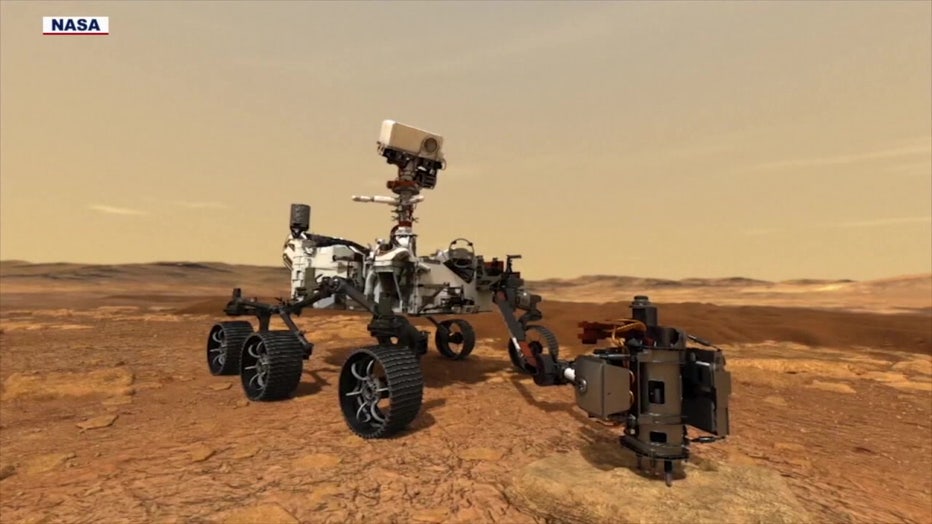Mars: Dust Fountains and the Future of Space Colonization

Mars dust formations
FOX 13's Craig Patrick talked with a UCF professor who has a plan to make it easier to live on Mars and why we would want to make a base there.
Why Mars?
TAMPA - As NASA and SpaceX plan future missions to Mars, scientists like Dr. Ramses Ramirez are looking beyond the first landing. Getting to Mars takes months, and astronauts would likely need to stay several months or more than a year before returning. While risky and politically complex, the potential payoffs go beyond the search for life.
"There's a lot of mining materials there. We also have close proximity from Mars to the asteroid belt," said Dr. Ramirez.
From rare Earth metals to Helium-3, Mars could hold resources that revolutionize energy and industry back on Earth.
What’s Helium-3, and Why Does It Matter?
Helium-3, a rare isotope already found on the Moon, could power the planet for generations using fusion energy. Dr. Ramirez believes Mars—and its proximity to the outer planets—could be key to accessing even larger reserves.
"If we are able to mine the Helium-3 resource, we have enough energy to power the world for a century or something like that," he said.

Courtesy: NASA.
How Would Dust Fountains Warm Mars?
Dr. Ramirez has developed a unique plan: engineer dust fountains to help terraform the planet.
Here’s how it works:
- Martian soil would be sucked into a machine and reformed into cylindrical nanorods (much smaller than glitter).
- These nanorods would be sprayed into the lower atmosphere like a fountain.
- As they interact with solar radiation, they would trap heat near the surface, acting like a localized thermal blanket.
"So, you warm the planet," said Dr. Ramirez. "You can really intensify and create a greenhouse effect on a local area."

The idea is to gradually warm small patches of Mars to about 30°F—still cold, but a step toward growing plants, enriching soil, and producing breathable air.
What About Safety and Space Tourism?
Radiation exposure is a concern, but Ramirez believes the risks are manageable.
"Your chance of cancer only goes up a couple percent if you stay a year on Mars," he said. "With shielding, you can minimize those risks even further."
In his view, Mars could become a "second Earth," opening the door for space tourism and even permanent settlements.
What’s the Long-Term Vision?
Ramirez believes Mars is just the beginning. With the rise of artificial intelligence and quantum computing, our capabilities could leap forward within two decades.
"By the time we colonize Mars, we could very well have the technology to go on to other star systems," he said.
Programs like "Breakthrough Starshot," supported by the late Stephen Hawking, are already working on probes capable of reaching Alpha Centauri—our nearest star system—at 100 million miles per hour.
READ: Amazon’s Project Kuiper launches first full batch of satellites from Florida
What's next:
On Wednesday night, "Breakthroughs in Science" will explore the next step in space infrastructure: how Florida scientists are designing roads and buildings for the Moon.
It will air at 10 p.m. on Wednesday.
CLICK HERE:>>> Follow FOX 13 on YouTube
The Source: This report is based on original interviews with UCF Physics Professor Dr. Ramses Ramirez, NASA documents, and scientific analysis related to terraforming and deep space exploration.

